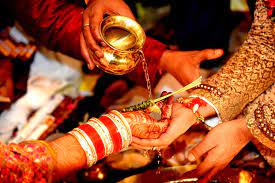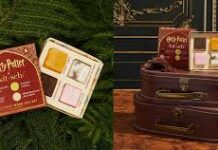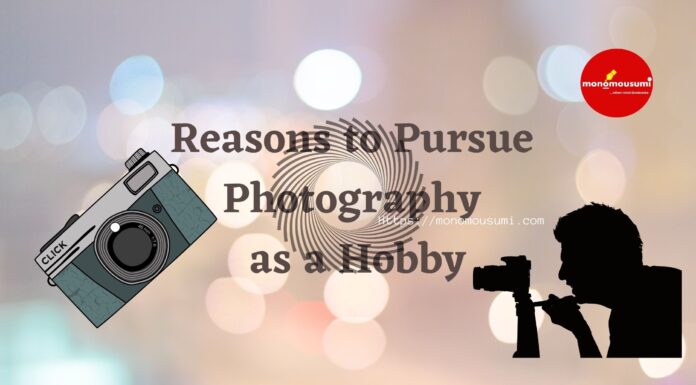What would you use to sum up Indian weddings in one word?
Magnifique?
Bright?
A jumble sale?
Although an Indian wedding can be described by all of these terms and more, we would also like to add the word adaptable to the list.
Indian wedding customs have altered throughout time despite their well-known cultural and traditional influences. These days, choosing to get married is more of a personal decision than a legal requirement. For millennial couples, the secret to advancing and walking down the aisle is to modernize an ancient wedding tradition. They are therefore free to express themselves without feeling limited by social conventions.
Indian Marriages: Past and Present
Not everything about wedding customs has changed throughout the decades or even centuries, even though some have. Just as with everything else, including fashion, wedding trends have evolved dramatically throughout time.
Indian weddings are more varied and emotional than ever these days.
Indian weddings these days are very expressive and daring, particularly when it comes to photojournalism. Couples don’t hesitate to display their love for one another or act sultrily in front of the camera.
The increasing acceptance of interfaith unions has resulted in an increase in fusion and mixed marriages, which let various ethnic elements add a unique touch to ceremonies.
Indian weddings are no longer limited to the couple’s hometown or to certain seasons.
Indian weddings used to exclusively take place in the summer and winter, but these days they happen all year round. It has also become more and more common for destination weddings to replace the custom of getting married in your hometown. Destination weddings are no longer exclusive to the wealthy; instead, they are becoming more popular at all economic levels. More and more couples are making the decision to move away from their hometowns, bringing with them a more intimate network of friends and relatives.
Indian nuptials are much more personal.
Indian weddings have grown more private and smaller over the past few years—perhaps even the last ten. Couples also trim their guest lists; they don’t invite the whole town. There’s a discernible shift toward more intimate, smaller wedding celebrations. Though most families still feel the need to throw one traditional, lavish reception to celebrate at least one special event with everyone who has ever been a part of their lives, they only invite their closest friends and relatives.
When planning their wedding, couples give individuality the attention it deserves.
Customized gifts, personalized clothing, and name creations are just three of the many items that can be personalized for a unique celebration. These days, Indian weddings are meticulously organized. Families can hire songwriters and poets to write songs and poems in praise of the couple to be recited or sung during the ceremony, commission artists to create a painting for the wedding invitation, or arrange entertainment for the guests that will last all day.
Beyond red, brides are now experimenting with various colors for their wedding attire.
Even though pink and red are classic and lucky, today’s bride is starting to play with pastels, blues, and gold. Additionally, more and more brides are adopting Western or other fusion aspects, including lighter fabrics and less elaborate embellishments, into their bridal gowns. The bride’s personality and message to the world are frequently reflected in her attire. Additionally, designers are now concentrating on outfitting the bride’s entire clan in addition to creating gowns specifically for the bride.
Since getting married, couples have become more environmentally conscientious.
By keeping the festivities to two or three days, couples these days are attempting to lessen the carbon imprint that their nuptials leave behind. Some couples decide to celebrate with their closest friends and family only once or twice. Some are taking a more conscientious approach and searching for eco-friendly ways to do things like sending digital invites, eschewing plastic, decorating with eco-friendly items, assembling welcome baskets with locally sourced organic and healthful products, or even just wrapping presents in natural, recyclable materials.
A whole new development has occurred with regard to changing surnames.
The modern bride has taken to adding her husband’s last name to her maiden name or choosing to keep it the same. Conversely, some men have taken to adding their wife’s surname to their own names.
There are plenty of wedding customs that can be followed the day before, on the day of the wedding, and even after. Many religious perspectives see marriage as a sign of the combining of two families and the celebration of a beautiful couple’s union in a marriage based only on love. Hindu weddings, which span many days and have numerous customs involving the families of the bride and groom, are a good example of both of these ideas.
There are a few characteristics common to Hindu weddings that people may identify from around the globe. Typically, a Hindu wedding is held in a mandap, which is a plain or ornate structure constructed just for the wedding. During a mehndi party, the bride is painted in intricate designs using henna ink, which momentarily stains her skin, as a reflection of their distinctive culture and values. Before any form of ceremony occurs, the bride-to-be’s hands and feet must be covered in these henna tattoos. Hindu weddings have a strong emphasis on color, as seen by the vibrantly colored attire and décor that are on display during the ceremony.
Indian bridal jewelry has traditionally been associated with the classic uncut diamond design known as polki. Brides have been adorned with polki for decades, lending an air of grandeur and wealth with its sparkling brilliance. Beyond polki, though, the realm of traditional Indian bridal jewelry offers a wide range of options. These diamonds, tucked away in intricately woven designs, are what gives Indian bridal jewelry its vibrant colors.
The Scriptures
Hindus follow the scriptures known as the Vedas, just like adherents of other religions. Though they are divided into four parts, they are conceptually comparable to the Christian sacraments. The Vedas have a strong influence on many wedding-related customs and beliefs.
The Vedas, which divide a person’s life into four stages that the bride and groom must comprehend before saying “I do,” are the foundation and essence of Hindu culture and religion in India. The sequence of these phases, which are referred to as the Ashrams, is as follows: studentship, householder, retirement, and self-actualization. Marriage is regarded as a sacrament in almost all religions, hence in Hinduism, it is typically done following the first Ashram stage. The drive to become a homeowner increases as the studentship phase, which most people spend somewhat less than half of their lives fulfilling, ends.
Ganesh Poojan
Hindus worship numerous gods, the most important one being Ganesha, who is associated with marriage. Known by most as the elephant-headed god, Ganesha is the god of knowledge and salvation. Many individuals think that the wedding will go smoothly once they worship and pray to this specific god. All future difficulties in the ceremony are erased by Ganesha’s presence at the wedding. The name of this particular ceremony or invocation is Ganesh Poojan. It is possible to carry it out before the wedding.
Kanyadan
Kanyadan is another customary ritual performed throughout the wedding season. A brother or close uncle ushers the bride into the mandap. With her parents by his side, the groom waits amiably at the mandap entry for his future bride. The bride and groom’s feet and hands are washed with a mixture of milk and water by the parents when they offer their daughter’s hand in marriage.
The washing of their feet in this particular ceremony stands in for the purifying of their bodies and spirits in preparation for a new life together. Water is poured over her husband’s hands by the bride’s mother, and the water falls upon the groom’s and bride’s hands, cleansing them of all sin.
The nuptials
It’s finally time for the wedding after a few rites and rituals are finished. The bride and groom shall first and foremost be seated in front of Agni, also referred to as a holy fire. A Hindu priest reads passages from the Vedas book to them while they sit. Within the Hindu religion, fire is seen as a life-sustaining element. The couple then walks around the fire four times, one for each Ashram, following the priest’s recitation of the scriptures. The couple exchanges seven vows to conclude the customary ceremony, after which they declare their eternal love for one another. The Sanskrit language is typically used to pronounce these vowels.
A traditional Hindu wedding includes all of these unique rituals and beliefs. While many wedding customs are distinctive, none of them can match the Hindu wedding’s uniqueness and cleansing meaning. Hindu marriage represents the unification of two families into one, in addition to love. An important and significant aspect of the wedding is the couple’s acceptance of one another and their participation in the Hindu rituals and festivities.
What Sets Hindu Wedding Cards Apart?
Hindu wedding invitation cards symbolize the customs and blessings that will tie the couple for all time. A wide variety of imaginatively created Hindu wedding invitations by Parekh Cards may effectively communicate the spirit of the customs and rituals, and they will surely be the ideal representation of your wedding.
Which Hindu wedding card designs are now in style?
Traditional Hindu Wedding Invitations feature traditional artwork and creative abilities, which are frequently showcased in marriage card designs in an appropriate manner. The most alluring natural tones are used to create marriage invitations with the finest artistic work in perfect contrast. The following are a few typical Hindu wedding card designs that can be seen on contemporary Indian marriage invitations:
Warli Art: The contemporary generation adores and values traditional art. Tribal Warli art has become increasingly significant in the fashion business for this reason. Modern Indian wedding cards may even feature Warli patterns and themes.
Paisley Design: The majority of designer Hindu wedding cards have straightforward Paisley designs, also known as the Mango pattern. They are available in several vibrant hues. The card instantly has a festive appearance due to its exquisite design.
Floral Patterns: Since flowers are seen to be lucky, they are used for all kinds of occasions. Of all, flowery designs on cards seem nearly appropriate for events such as marriages. Elegant Indian invites come in a variety of floral pattern styles.
Asymmetrical Patterns: Compared to earlier generations, today’s youth have a distinct perspective on art. The contemporary generation favored asymmetric shapes in the art, while those from earlier eras preferred symmetrical works. Asymmetrical artwork is frequently seen on contemporary marriage invites.
Our Method for Creating Hindu Marriage Invitations
Indian wedding invitations are a crucial component of the planning process for Hindu weddings. We offer an assortment of wedding card designs to ensure that the big day is happy and unforgettable. The vibrant and enjoyable atmosphere of the Hindu marriage ceremony is reflected in our exquisite collection of Hindu wedding cards.
We have transitioned from conventional to modern designs throughout time. Excellent craftsmanship and a variety of papers have made this feasible. Furthermore, we provide Hindu marriage invites worldwide.
Ensure that the Hindu wedding invitations you send stand out.
You can choose from a wide variety of Hindu marriage invitation cards to get the ideal one for you. Once more, your decision will be based on your caste, class, and region. Hindu marriage invites vary from individual to individual. Those who practice religion choose cards featuring images of gods.
Select Traditional Hindu Wedding Invitations with pictures of the marriage procession and firecrackers appeal to those who want to look a little more upscale and lavish. Depending on your taste, the Indian wedding cards might be square, rectangular, or hexagonal. Rich tones of red, orange, purple, yellow, golden, silver, or brown are typically used for the card background.
Write and Win: Participate in Creative writing Contest & International Essay Contest and win fabulous prizes.











